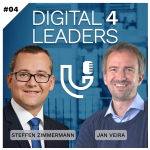How to boost your learning content
Focus on the analysis and design phase
Content
- Analysis: How do you find out who needs to be able to do what and what for?
- 1. Taking time for workshops with different experts
- 2. Identify important competencies on the basis of use cases
- Design: How does the content lead to success for learners?
- 1. Teaching more goal-oriented with backward design
- 2. Understanding how adults learn
- 3. Achieving the learning objectives with a blended learning format mix.
It is the nightmare of L&D managers: You have provided all the necessary learning content and your employees have finally completed the training. But now you realize that many of them can’t use the knowledge at all, have already forgotten the learning content, or haven’t learned enough to be able to use the knowledge appropriately in their everyday work.
How can you make your training measures and training materials available in such a way that your employees don’t just “check off” another training course without any long-term added value, but instead build up skills that enrich your company with the necessary job profiles and thus arm yourself against the shortage of skilled workers?
We have found that companies often focus on the development, implementation and evaluation phases – in other words, on the questions: How do we make learning and development possible in the company? How do we make the learning content available? Via our own LMS or an eLearning provider?
In our monitoring of further training measures in large companies, we have recognized that – based on the ADDIE instructional design model – especially analysis and design are crucial to the success of training. Without analysis and design, it will be difficult to reach those employees who lack competencies with the right learning content and methods. This is why our core competence is company-specific consulting and support in exactly these two phases.
In this article, you will learn how to implement analysis and design so that re-skilling and upskilling have lasting success in your organization.
The ADDIE instructional design model …
- is an acronym for the five phases of a development process: Analysis - Design - Development - Implementation - Evaluation.
- is a methodology for instructional design based on performing each phase in the specified order, with emphasis on reflection and iteration.
- is the most widely used model for designing learning content because of its simplicity and effectiveness.
Analysis: How does the content lead to success for learners
Without a sound, in-depth analysis, the training may miss its target. The A in the ADDIE instructional design model stands for the analysis of the current situation, target groups, knowledge gaps, and learning objectives. The core question here should be: How can we improve the situation and achieve the business goals through training?
In order to create an analysis of competency needs and a training plan based on this, the following points are helpful:
1. Taking time for workshops with different experts
Allow sufficient time for workshops. Start by talking to the department heads. Evaluate together:
- Which future projects require which competencies in the specialist departments?
- In which subject areas is a particularly great need for training?
- How many employees require training?
- Is there a specific date by which the employees need to use the new skills?
- Which experts already exist internally for this topic area?
- How much working time can the department heads make available for the training of employees?
Subsequently, people from different sectors should be able to contribute their expertise.
- With instructional designers, you can discuss the structure of the training, the learning methods used, and the evaluation options.
- Consultants can help you keep track of which competency gaps need to be filled, who needs to acquire these competencies, and how much time and budget the training should take up.
- Experts in the subject area will help you develop the content of the training and assess what skills are essential in the subject area.
2. Identify important competencies on the basis of use cases
Work with concrete use cases from your company and with competencies that your employees require for those cases:
- First define concrete use cases, i.e. everyday and future challenges in your company that need to be mastered.
- Then work out which competencies are required for these individual use cases.
- Prioritize how important the competencies are for each use case: "absolutely necessary", "helpful and important", "interesting".
- Include those competencies in your training planning that are absolutely needed for most use cases (category "absolutely necessary"). These competencies are the basis for the learning goals.
- Those competencies that are categorized as "helpful and important" or "interesting", or that are "absolutely necessary" only in very specific use cases, can be taught in additional, voluntary learning sessions or only made available to selected employees - as an "add-on", so to speak.
- As an illustration, you can also create a resume of the required job profile to show which skill gaps need to be closed.
Design: How DOES the content LEAD TO SUCCESS FOR learners?
Developing a strategy and determining learning methods, structure, learning duration, assessment and evaluation should not be underestimated. To create storyboards or prototypes of the training which are appropriate for the learning objectives and your target audience, consider these tips:
1. Teaching more goal-oriented with backward design
In the traditional learning approach...
- you first identify a topic for which training is needed,
- then plan the content that addresses this topic and
- create an exam at the end to measure what has actually been learned.
In the backward design…
- you approach learning from the other side and start from the outcomes you want to achieve,
- you first identify what learners need to know and be able to do after the training,
- you create a suitable examination to make measurable what has been learned, and
- only in the last step, you plan the learning sequences that learners now need to master the work tasks and use cases.
The traditional approach is very topic-based, but it is not lasting and transferable. Learners spend a lot of time with a large amount of content, the benefits of which are not comprehensible. This approach therefore often fails when it comes to implementing what has been learned: If learners feel they are doing something pointless and learning irrelevant material that has little connection to the world of work, they merely store the knowledge for the short term, until it is reviewed, but do not acquire any long-term competencies from it.
With backward design, you approach learning from the other side and start from the outcomes you want to achieve. This approach helps you define clear learning goals, find appropriate assessments, and design learning content efficiently because you prepare only those topics that learners really need to achieve the necessary competencies.
2. Understanding how adults learn
Put yourself in the shoes of your employees and prepare the learning content in an adult-friendly way. There are a few principles we should keep in mind when designing content that will motivate learners and add value. The best way to do this is to follow Malcolm Knowles’ “Theory of Andragogy”, the theory of lifelong and adult learning.
- Adults need to know why they have to learn something: Therefore, it is important to teach only what they really need for the competencies and tasks and to explain to them why this is important.
- Adults need to learn experientially: learning should be characterized by trial and error, experimentation, and the direct transfer of knowledge to everyday work.
- Adults view learning as problem solving: training should allow learners to discover things for themselves and guide and support them when they make mistakes.
- Adults learn best when the topic is of immediate value: Also consider different prior knowledge of learners - the learning content and methods should take into account different levels of prior experience.
3. Achieving the learning objectives with a blended learning format mix.
Don’t just rely on videos in a library but supplement your learning material with additional learning formats such as live sessions with experts, challenges or discussions. Depending on whether you want your employees to gain new skills, more knowledge, or a change in attitude, you also need different blended learning formats that are combined with each other. By offering a variety of formats, you promote interactivity, make training more exciting, and appeal to different types of learners. But how do you combine the many different learning formats so that your learners achieve the learning objectives and your company benefits employees with future capabilities? You can find an overview here:
Overview on the Blended Learning formats
We recommend testing the training in a pilot phase after the design phase to ensure that the learning content and methods are effective.
We would be happy to arrange a meeting with you via the contact form!


